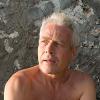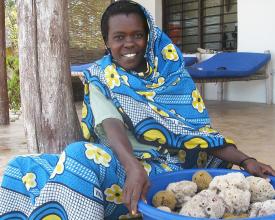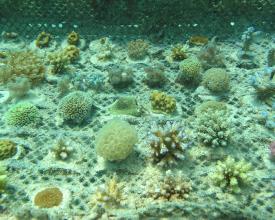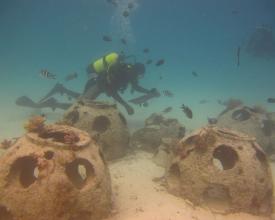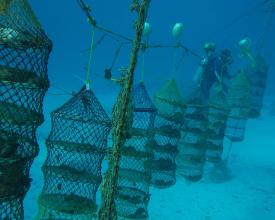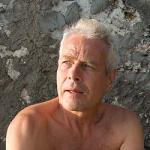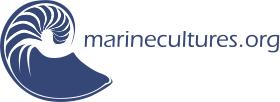
Community-based aquaculture development and marine protection
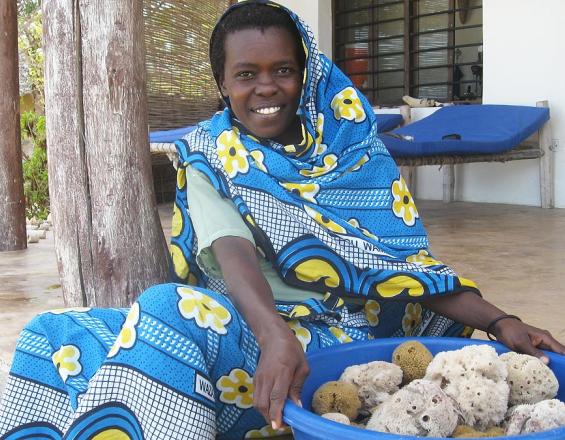
This solution addresses poverty reduction in Zanzibar for its coastal communities through a more sustainable management of their natural resources, additional income, and consequently, better quality of life. The approach of implementing ecological aqua farming of bath sponges with women in coastal communites promotes healthy economic growth, reduces environmental pressure and threats to marine life and othernatural wildlife, improves public health and strenghtens the economic and social status of women.
Context
Challenges addressed
Major problems in the area are high unemployment, unsustainable management and overwexploitation of marine resources, destruction or degradation of coral reefs, gender inequality, poverty, and lack of economic opportunities. To reduce poverty and to create jobs we developed 2009 sustainable sponge farming and started 2014 with a coral farming trial.
Location
Process
Summary of the process
Continuity, participatory management and full sustainability are dependent on each other. Only through a continuous pursuit of environmental, economic, and social goals sustainable development full sustainability can be attained. Each change and each planning of a future step requires a new check of the 3BL sustainability and corresponding adjustment. Do this together with the participants. Implement the thinking and that they get used to it in their daily work for the development of the product.
Start with a common evaluation, do the mini business plan and decide always collectively what should be done next. Make a small trial and if it works start a small production and work on the quality of the product. Make test sales and check the customer feedbacks together with the farmers. Start to scale the production only if the market wants your product. If the farmers cannot sell their product they will be disappointed. Develop sales and marketing together with them. The farmer must learn how to acquire new clients so he can develop his production and scale according to the demand of the marked.
Building Blocks
Sponge aquaculture as an alternative means of income
The cultivation of seaweed for the production of carrageenan, a thickener widely used in foods, has been a major source of income for Zanzibari women for more than 20 years. An analysis of the local conditions revealed that the cultivation of seaweed is subject to a sharp decline in production due to increasing occurrences of diseases and pests, and a low world-market price. Consequently, unmarried women with kids are no longer able to make a living from seaweed farming.
When searching for alternative means of income many aspects such as the know-how of the parties involved, eco friendliness, market-opportunities, investment requirements, general acceptance of the method, scalability, and availability of resources need to be considered. Aquaculture of sponges was identified to be a suitable alternative to seaweed farming promising substantially higher incomes.
Enabling factors
- The methods for cultivating sponges and seaweed share many aspects which made it easier to set-up sponge farms and train the women.
- The shallow coastal waters are organised as common property and dedicated sites for sponge farms could be negotiated with the local fishers and communities.
Lesson learned
It was difficult to find women pioneering as sponge farmers willing to learn how to swim and to try something completely novel – a challenging task in Zanzibar’s traditional society.
Evaluation of suitable sponge species
The slow growth rates of sponges and the seasonal variations given in Zanzibar require evaluation periods of at least two years to allow a judgement for a sponge species’ suitability. The process comprises several phases:
- Collection of specimens of different sponge species in the wild (totally, more than 100 species were found and tested).
- Evaluation of each species’ suitability as bath- or cosmetic sponges (e.g. consistency, hardness, water absorption capacity, attractiveness). Promising samples were directly taken to potential customers to evaluate market acceptance.
- Growth tests of promising candidates (e.g. growth behaviour, growth rate, pest resistance, susceptibility to algal growth).
- Candidates will be subjected to propagation and farming tests (questions to be answered were: can the sponges be efficiently multiplied via segmentation; what are the chances of survival for a cutting; do the cuttings grow fast enough; how much maintenance is required; is the process profitable etc.)
Enabling factors
The most important factors for a successful evaluation phase are sufficient funds, continuous local presence of project managers, reliable local partners, partners in academia, a lot of patience and the ability to pitch both project and product to future producers and buyers respectively.
Lesson learned
The long period of two years it took to find a suitable sponge species and to establish of the cultivation method was the greatest challenge in the initial phase of the project.
Initially, the determination of growth rates was approached using quantitative methods (i.e. tracking volume, weight and environmental factors over time). Over time, however, it became clear that the factors influencing sponge growth are myriad while the people working on the projects are not used to work according to exact criteria. The quality and suitability of a sponge are appropriately assessed by close observation and by developing a feel for the various indicators.
Resources
Setting-up a sponge farm
The development of an appropriate cultivation method was started concurrently with the evaluation of suitable species and in close collaboration with the first sponge farmers. In this phase many technicalities had to be clarified and a simple yet robust cultivation system that can easily be multiplied was developed. Some of the details that needed to be worked-out were:
- The minimum water depth at which sponges thrive and at which sponge farmers can spend as much time as possible without being required to swim.
- The optimal spacing between sponges.
- Sourcing rope material suitable for the construction of the farm and attachment of cuttings that is durable, cheap, easy to handle and locally available.
- The ideal cutting size, shape and suspension method.
- The minimum number of cuttings per farm necessary for two sponge farmers to make a living and to ensure that propagation does not require collection of additional sponges from the wild.
- The frequency at which cuttings need to be cleaned and trimmed.
- The right moment to harvest sponges.
- Methods to process, clean, preserve and dry sponges as well as appropriate packaging and labelling of the product.
- A training curriculum for sponge farmers and the outline of technical assistance needed for future support independent sponge farmers.
Enabling factors
Sufficient staff time, funds, patience and active communication were the most important factors that helped us establishing the first sponge farms.
Lesson learned
Experiences gained over a two-year period are not guaranteed to be applicable as such in future years as climate, water temperature etc. are subject to change. In that respect aquaculture is like land based agriculture where years of experience, and trial and error are key to shape best practices. The possibility of variability should be kept at the back of one’s mind when setting-up similar projects and needs to feed back in the form of a continuous supervision of the farmers with a focus on quality assurance and advancement of the methods applied.
Development of independent business models
While the first sponge farms were set-up the appropriate business model needed to be established. The objective is to generate a stable income for sponge farmers and to enable them to gain independence from marinecultures.org as early as possible. Some of the aspects that needed to be addressed:
- Sufficient access to sales market(s) for sponge farmers.
- Who will assume the responsibility for commercialisation in Zanzibar and/or overseas? Possible solutions:
> Formation of a cooperative.
> Appointment of a salesperson.
> Direct sales through sponge farmers.
> NGO or company purchases complete or partial harvests for overseas sales.
- Ensuring continuous training of new sponge farmers.
- Ensuring quality control.
- Establishing local competency and responsibility for multiplying sponge farms at existing and new sites.
Enabling factors
Zanzibar is a popular tourist destination which made it relatively easy to find customers interested in buying locally and sustainably produced souvenirs. The proximity to the sales market allowed us to directly test the customers’ price sensitivity using small quantities of sponges and to adjust the prices accordingly.
Lesson learned
The biggest challenge for gaining market access is the limited scalability of the sponge farms. Each sponge farm needs to be able to continuously deliver a certain amount of sponges that meet certain quality standards. This implies that sales representatives pitching the product to customers cannot jump ahead and promise more than what sustainable production is able to deliver.
Impacts
- Each sponge farm feeds about 2-3 large families with ~10 people. We install 4 new farms per year. Scaling is depending of the production in the nursery farm.
- Women of Jambiani learned how to farm sustainably bath sponges and how they can sell them locally. After one year training they get independency.
- An artificial reef (AR) with reef balls was built with the fishermen committee of Kibigija to learn more about the importance of reefs and biodiversity. Our coral farmers learned to cultivate corals and plant them on the AR.
- The pilot project mooring & buoys in Jambiani & Paje proved that anchor damages can be reduced and corals get protection and more respect. 2016 we will install 40 more buoys in Zanzibar, Pemba and Mafia.
Beneficiaries
Focus on single mothers since they have nearly no job opportunities. After training, beneficiaries become independent and start their own business. From their product sale they get a good income to feed their families and build their own house.
Sustainable Development Goals
Story
In 2007 we build our resident home in Zanzibar. Impressed by the seaweed farmers we discovered there very bad income from the product and thought there must be better marine products that guarantee a better income and quality of live for the coastal community. We did a research trip in Asia and the Pacific region and found in Micronesia the organization MERIP. They cultivated sponges, corals and invertebrates together with the community and with simple techniques that did not cost a lot of money. Back in Zanzibar we started 2009 our first sponge farm. We had to do a lot of research to find a sponge species that can be used and sold as a bath sponge. The common bath sponges species we could not find in the waters of Zanzibar. After testing more than 120 different species we found a nice intertidal sponge that can be cultivated sustainably because we can take fragments of the sponges in the productive farms as seeds. We had to invest a lot of time to figure out best farming methods. Today we have 3 productive farms and can open 2-3 new farms a year. The slow scaling of the business model has its reason that the number of seeds is limited if you want to bee sustainable. Because our aim is to create jobs we started 2014 coral farming for the aquarium trade that allow much faster scaling and so has the potential to create faster more jobs in the future than sponge farming. Without healthy water aquaculture has no future. To save the created jobs in the long term the coastal communities of Zanzibar have to learn more about the sea, the importance of corals, sea grass, mangroves and the biodiversity to manage their natural marine resources themselves sustainable. That’s why we have different marine protection and educational projects.
